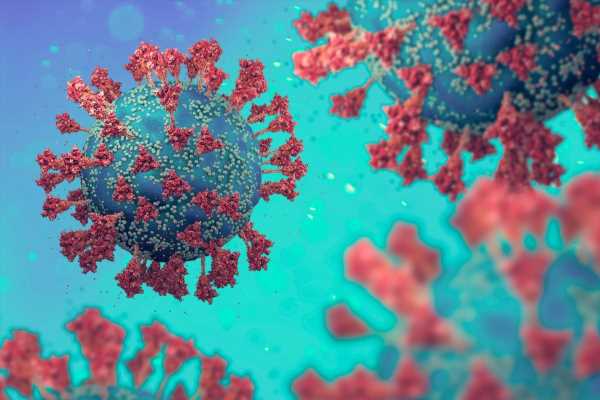In a recent study posted to the medRxiv* preprint server, researchers tracked the rapid shift from the new severe acute respiratory syndrome coronavirus 2 (SARS-CoV-2) variant of concern (VOC) Omicron BA.1 sub-variant dominance to BA.2 sub-variant dominance in Sweden between January and March 2022.

The estimates revealed that during the Omicron wave of January 2022, the daily number of new coronavirus disease 2019 (COVID-19) cases surged to almost 50 million worldwide, far exceeding the daily peak of 14 million COVID-19 cases due to the Delta VOC during April 2021, representing an unprecedented transmission of Omicron.
A reverse transcription-polymerase chain reaction (RT-PCR) assay capable of genotyping Omicron BA.1 cases directly in primary SARS-CoV-2 RT-PCR testing enabled the detection of BA.1-positives at a large scale in Sweden daily, which helped source data for the present study.
About the study
In the present study, researchers used an improved, more sensitive, multiplex-version of ribonucleic acid (RNA) extraction-free protocol of the Centers for Disease Control and Prevention (CDC) SARS-CoV-2 RT-PCR assay. This assay used an increased sample and reaction volume to enable simultaneous detection of general SARS-CoV-2 infection status, ribonuclease P (RNase P) sample integrity, and Omicron BA.1-variant status.
The assay tracked Omicron BA.1 to BA.2 sub-variant transition by analyzing 174,933 nasopharyngeal samples collected from several districts of central Sweden between January 26 and March 8, 2022, on a day-to-day basis. The nasopharyngeal swab samples were anonymized and subjected to heat inactivation before RT-PCR testing.
The Public Health Agency of Sweden provided in vitro expanded Omicron BA.1 reference sample, used for spike (S)BA1 primer-probe sets’ evaluation.
The researchers performed RT-PCR in eight replicates per concentration of serially diluted (1:10) Omicron BA.1-positive clinical samples to determine the log-linear cycle threshold (CT) range for the nucleocapsid (N1) and SBA1 primer-probe sets under assay conditions. Further, they performed the assay in the presence and absence of the SBA1 primer-probe set for 185 clinical samples to evaluate the probe effect on N1 CT values.
Finally, they used whole-genome sequencing (WGS) for sequencing the whole SARS-CoV-2 genomes.
Study findings
Omicron BA.1 sub-variant was the dominant variant among COVID-19-positive cases during January 2022; however, the BA.1 fraction steadily decreased to 11% by March 2022, and Omicron BA.2 sub-variant eventually outcompeted BA.1 sub-variant across all healthcare districts of central Sweden. Furthermore, Omicron BA.2-infected samples had almost two-fold higher viral RNA than BA.1-infected samples, partially explaining how BA.2 sub-variant is currently outcompeting the BA.1 variant globally.
The increased viral load in the upper respiratory tract (pharynx) of Omicron BA.2 case samples indicated its higher infectiousness compared to BA.1 sub-variant, but this was a surprising revelation. The researchers thus subjected 3,392 samples to N1/RP/SBA1 assay and an extraction-based assay targeting N and RNA-dependent RNA polymerase (RdRp), located further 5’ inside the open reading frame (ORF)1ab. RT-PCR assay for the N gene showed linear correlation for both N and RdRp in the extraction-based assay, confirming increased viral copy numbers in BA.1-negative COVID-19 samples in both the assays and genes probed. Furthermore, WGS confirmed that all 118 BA.1-negative samples were of BA.2 lineage in this analysis.
All 698 samples testing SARS-CoV-2-positive in RT-PCR assay were genotyped Omicron BA.1 negative by whole-genome sequencing, demonstrating that Omicron BA.2 was the variant outcompeting BA.1 in the Swedish population.
The authors also observed the BA.2-specific ORF3a: H78Y mutation in around 40% of BA.2 cases classified by WGS. These case samples belonged almost exclusively to the southern-most Swedish region, where they constituted 72% of COVID-19 cases (103/144). In striking contrast to previous reports from Southern Europe, WGS showed no COVID-19 cases due to Delta/Omicron recombination or co-infection.
Conclusions
The RT-PCR assay used in the current study robustly differentiated general COVID-19 status and Omicron BA.1 variant status in a single RT-PCR reaction, thus enabling real-time monitoring of Omicron BA.1/BA.2 transition in Sweden at a mass scale.
Further, this assay could monitor the Omicron sub-variant transition where needed, saving time and challenges associated with genotyping by WGS sequencing due to its compatibility with the well-established CDC N1/RNaseP probe sets.
*Important notice
medRxiv publishes preliminary scientific reports that are not peer-reviewed and, therefore, should not be regarded as conclusive, guide clinical practice/health-related behavior, or treated as established information.
- Lentini, A. et al. (2022) "Monitoring of the SARS-CoV-2 Omicron BA.1/BA.2 variant transition in the Swedish population reveals higher viral quantity in BA.2 cases". medRxiv. doi: 10.1101/2022.03.26.22272984. https://www.medrxiv.org/content/10.1101/2022.03.26.22272984v1
Posted in: Medical Science News | Medical Research News | Disease/Infection News
Tags: Assay, Coronavirus, Coronavirus Disease COVID-19, covid-19, Gene, Genes, Genome, Genotyping, Healthcare, heat, in vitro, Mutation, Nasopharyngeal, Omicron, Polymerase, Polymerase Chain Reaction, Public Health, Respiratory, Ribonucleic Acid, RNA, SARS, SARS-CoV-2, Severe Acute Respiratory, Severe Acute Respiratory Syndrome, Syndrome, Transcription

Written by
Neha Mathur
Neha is a digital marketing professional based in Gurugram, India. She has a Master’s degree from the University of Rajasthan with a specialization in Biotechnology in 2008. She has experience in pre-clinical research as part of her research project in The Department of Toxicology at the prestigious Central Drug Research Institute (CDRI), Lucknow, India. She also holds a certification in C++ programming.
Source: Read Full Article
